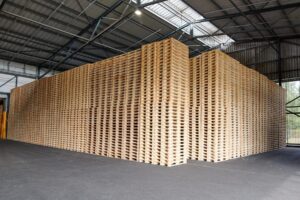This article presents a scientific analysis comparing the environmental impacts of wooden and plastic transport pallets, offering insights for industry stakeholders and policymakers. The research evaluates the lifecycle environmental burdens of both types of pallets. A key finding is that a plastic transport pallet exhibits a higher environmental load than a wood pallet.
The study also indicates that secondary plastic does not offer greater benefits than the use of a wood pallet. Furthermore, secondary plastic generates greater toxicity risks through additional operations. Pallet weight is identified as a significant indicator of environmental impacts. However, the high load capacity of wood pallets decreases their impact during the use phase. Based on the Life Cycle Assessment (LCA), the study found that wood pallets have lower environmental impacts, especially when the wood is used for energy recovery at the end of its life cycle. Even if a wood pallet is disposed of in a landfill, it is still more environmentally friendly than a primary plastic pallet.
The research also notes that using pine wood for pallet production has fewer environmental impacts compared to spruce. Globally, wood pallets, particularly the four-way type, dominate the market, accounting for 86% of all pallet production. This study, utilizing unpublished raw data and comparing pallets based on cargo weight and volume, reinforces the environmental advantages of wood pallets for a wide audience.







